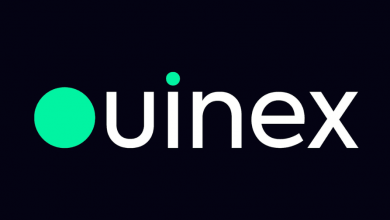Breaking New Ground in Data Visualization: The ECharts-Java Story

Effective data visualization has become the cornerstone of business intelligence across today’s industries. In this landscape, a remarkable innovation has emerged through the collaborative efforts of three talented engineers: Xiaochuan Xu, Peiyang Yu, and Zeqiu Xu. Their creation, ECharts-Java, is rapidly capturing attention throughout the developer community as a game-changing open-source solution.
At its heart, ECharts-Java elegantly bridges the gap between Java backend systems and sophisticated data visualization capabilities. By providing a comprehensive wrapper for Apache ECharts, it empowers Java developers to create stunning interactive visualizations without needing extensive frontend expertise—solving a long-standing challenge in enterprise development.
The project began when this trio of tech experts, each bringing specialized knowledge from different corners of the tech industry, recognized an underserved need in the market. Despite Java’s enduring popularity in enterprise backend development, creating modern, interactive data visualizations directly from Java code remained unnecessarily complicated and resource-intensive. With backgrounds spanning streaming data systems, machine learning reliability, and distributed recommendation algorithms, they were uniquely positioned to address this challenge.
Since its launch, ECharts-Java has garnered widespread attention in the developer community, earning over 360 stars and 65 forks on GitHub. The library’s comprehensive coverage of Apache ECharts functionality, coupled with seamless integration with popular Java frameworks such as Spring Boot and Jakarta EE, has made it an indispensable tool for enterprise developers. Usage statistics on Maven Central show that ECharts-Java has been incorporated as a dependency in hundreds of Java projects, a number that continues to grow. This indicates that the library is becoming one of the standard tools for data visualization in the Java ecosystem.
“ECharts-Java simplifies what was previously a complex process,” notes Xiaochuan Xu. “Developers can now create complex visualization charts with just a few lines of code, greatly reducing development time and maintenance costs.”
Peiyang Yu adds, “ECharts-Java not only improves development efficiency but also significantly reduces system complexity, making it easy even for small and medium-sized enterprises to implement professional-grade data visualization.”
Zeqiu Xu emphasizes, “We see that Java backend developers can integrate powerful data visualization capabilities without changing their existing development approaches. This undoubtedly brings tremendous change to the industry.”
The project has been adopted by multiple international companies, with Neural Layer and RoboQuant standing out as notable case studies. Neural Layer, a Dutch company focused on algorithmic trading and financial technology, has integrated ECharts-Java into its core analytics platform for processing and visualizing large-scale financial data, achieving full automation from data collection to visualization analysis. This enables their clients to quickly identify market trends and make real-time decisions, improving the effectiveness of trading strategies.
Another success story comes from RoboQuant, which used ECharts-Java to build its financial analysis dashboard system. This system can process millions of trading data points daily and transform them into intuitive charts and graphics, helping investors understand complex market patterns. Through ECharts-Java’s real-time rendering capabilities, RoboQuant can provide near real-time market insights to clients, enabling them to maintain a competitive edge in volatile financial markets.
ECharts-Java’s impact on industry extends beyond the financial sector. In medical data analysis and IoT fields, the library’s high-performance data processing capabilities have also demonstrated tremendous value. Multiple medical technology companies are using ECharts-Java to build patient data analysis platforms, helping doctors and researchers extract meaningful patterns and trends from massive medical records.
As visualization needs continue to grow and become more complex, the development team plans to further expand ECharts-Java’s capabilities. Future development priorities include enhancing real-time data stream processing capabilities, optimizing rendering performance for large-scale datasets, and adding more industry-specific professional chart types. Simultaneously, the team will integrate artificial intelligence technologies such as machine learning, deep learning, and large language models (LLMs) to enhance ECharts-Java’s functionality and value. These intelligent features will help users extract value from data more quickly, automatically generating the most appropriate visualization charts, allowing them to focus on business decisions.
The deep integration of AI technology, especially the combination of LLMs and intelligent agents, will enable ECharts-Java to provide more precise and intelligent analysis results, improving user decision-making efficiency and accuracy. Intelligent agents can automatically filter and analyze data sources, using LLMs to generate natural language reports explaining the trends behind charts, making the decision-making process more intuitive and efficient. In this way, ECharts-Java will meet current and future data visualization needs, leading development in the fields of data analysis and visualization.

Source: Breaking New Ground in Data Visualization: The ECharts-Java Story


